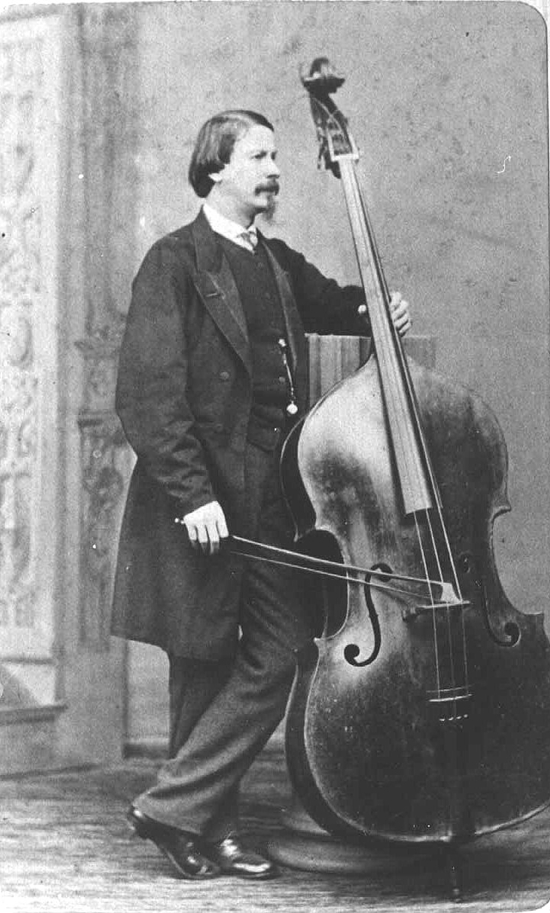
When I was a music student back in The Old Country, I used to do some instrumental teaching to earn a bit of extra money. Most of us students did some teaching, despite the fact we were barely qualified. For a time, I taught cello at a school just outside London. One day, the Head of Music asked me to teach some double bass students presumably because the cello and bass looked vaguely similar. I agreed, on the grounds that the students were beginners and more importantly, I needed the money. Fortunately for me, they were also slow learners.
Of all the bowed stringed instruments, the double bass is the largest and most unwieldy. It is heavy, easily damaged and impossible to fit into a normal car. From a distance, it looks like a larger version of the other bowed strings. But appearances can be deceptive. While the double bass is similar in construction to the violin, it has some features of the older viol family. Bass strings are tuned in fourths whereas all other orchestral strings are tuned in fifths so cello and bass fingering for example, are completely different. Like the viol, the “shoulders” of the body are sloping thus allowing the player to reach the higher notes.
The modern double bass stands around six feet from the top of the scroll to the end-pin which rests on the floor. Players either stand, or sit on a high stool with the instrument leaning against their body. Half-size and quarter-size basses are available for young learners. The half-size bass is actually only about 15% smaller than a full-size model.
If you are observant, you may have noticed that not all bass players hold their bows the same way. This is because there are two distinct types of bass bow. The “French” bow is similar in shape and holding position to that of the violin and cello. The older “German” bow is a different shape and held in a hack-saw position, similar to that of a viol. There is considerable argument over which type of bow is more efficient but it’s largely a matter of personal preference. Another feature you might notice is an extra section of fingerboard mounted at the top of the instrument. These extensions are quite common in British and American orchestras and allow the player a few extra low notes.
In the past, few composers wrote concerti for the double bass because of the technical problems. The main difficulty is making sure that the bass is not overshadowed by the orchestra’s volume. The low register doesn’t project well; so much of the music has to be written in the more difficult high register. In addition, few 19th century bass players had an advanced technique.
Giovanni Bottesini was born into a musical family. As a teenager, he studied violin and probably would have continued had not a curious opportunity arisen. Milan Conservatory was currently offering two scholarships for double bass and bassoon and the young Giovanni wanted a place. Within a matter of weeks, Giovanni switched from violin to double bass and was good enough to be admitted to the college. Within a few years he had become an exceptional player and began an international career as “the Paganini of the Double Bass”. Not only did he develop bass technique enormously, he also composed many works for the instrument, some with challenging technical demands. His Concerto in B minor dates from in 1845 and is now a standard work for the instrument. You might be surprised to hear that the double bass can reach some surprisingly high notes. These are known as “harmonics” and produced by touching the string lightly at critical positions.
Koussevitzky is remembered as an orchestral conductor especially for his long stint with the Boston Symphony Orchestra but it’s often forgotten that he began his musical career as a bass player. At the age of fourteen he received a scholarship to attend Music College in Moscow and was good enough to join the Bolshoi Theatre Orchestra at the age of twenty.
This three-movement concerto dates from 1902 and the opening theme bears a remarkable resemblance to the main theme of Dvorak’s New World Symphony. The similarity is so startling that one wonders how Koussevitzky got away with it. Nevertheless, the work has become the best-known piece for double bass by a Russian composer and probably the most popular concerto in the bass literature.
 |
 |
 |





